-
 Bitcoin
Bitcoin $81,533.6725
5.67% -
 Ethereum
Ethereum $1,587.2559
7.63% -
 Tether USDt
Tether USDt $0.9999
0.04% -
 XRP
XRP $1.9923
8.74% -
 BNB
BNB $577.9735
4.04% -
 USDC
USDC $1.0000
-0.03% -
 Solana
Solana $114.6754
6.94% -
 Dogecoin
Dogecoin $0.1560
6.76% -
 TRON
TRON $0.2389
4.11% -
 Cardano
Cardano $0.6198
7.80% -
 UNUS SED LEO
UNUS SED LEO $9.3868
2.77% -
 Chainlink
Chainlink $12.3289
8.26% -
 Avalanche
Avalanche $18.0099
8.03% -
 Toncoin
Toncoin $3.0232
-0.53% -
 Stellar
Stellar $0.2336
5.14% -
 Hedera
Hedera $0.1700
10.54% -
 Shiba Inu
Shiba Inu $0.0...01194
8.91% -
 Sui
Sui $2.1413
8.31% -
 MANTRA
MANTRA $6.7390
7.65% -
 Bitcoin Cash
Bitcoin Cash $297.2313
8.70% -
 Litecoin
Litecoin $74.1125
5.07% -
 Polkadot
Polkadot $3.5508
2.17% -
 Dai
Dai $1.0000
-0.01% -
 Bitget Token
Bitget Token $4.2491
3.82% -
 Ethena USDe
Ethena USDe $0.9988
0.00% -
 Hyperliquid
Hyperliquid $13.8480
9.34% -
 Pi
Pi $0.5924
4.82% -
 Monero
Monero $203.3177
4.27% -
 Uniswap
Uniswap $5.2004
6.70% -
 OKB
OKB $53.5321
3.78%
How do Chainlink nodes work?
Chainlink nodes fetch, validate, and deliver external data to smart contracts, ensuring accuracy through consensus and multiple sources, crucial for DeFi applications.
Apr 03, 2025 at 08:56 pm
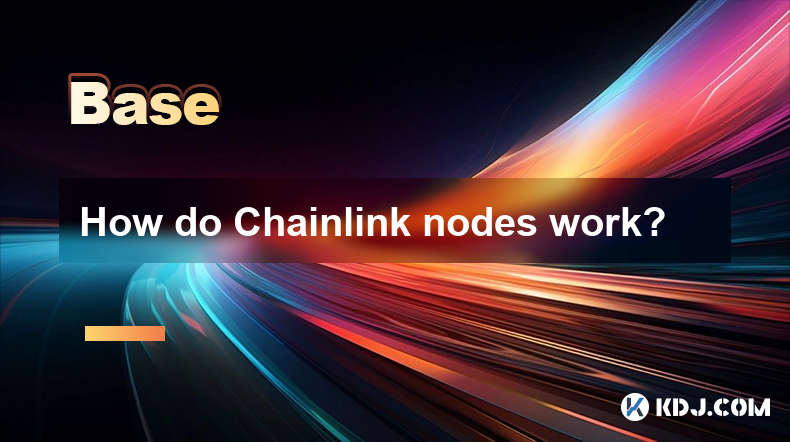
Chainlink nodes are crucial components of the Chainlink decentralized oracle network, which facilitates the integration of off-chain data into smart contracts on various blockchains. These nodes serve as the bridge between blockchain networks and external data sources, ensuring that smart contracts can access reliable and accurate data. A Chainlink node operator runs the node software, which is responsible for fetching, validating, and delivering data to smart contracts.
The operation of a Chainlink node involves several key steps. First, the node operator sets up the node software on a server, ensuring it has the necessary hardware and network capabilities. Next, the node connects to the Chainlink network, where it can receive requests from smart contracts. When a smart contract requires external data, it sends a request to the Chainlink network, which then distributes the request to multiple nodes. Each node processes the request by fetching the required data from external sources, such as APIs or traditional data feeds.
Once the data is fetched, the node performs validation to ensure its accuracy and reliability. This may involve cross-referencing the data with multiple sources or using cryptographic proofs to verify its integrity. After validation, the node encrypts the data and sends it back to the smart contract. The smart contract then aggregates the data from multiple nodes to reach a consensus, ensuring the final data used is as accurate and trustworthy as possible.
To become a Chainlink node operator, individuals or organizations must meet certain requirements. They need to have technical expertise in running server infrastructure and managing software. Additionally, they must be willing to stake a certain amount of LINK tokens, which serves as a guarantee of their commitment to the network's integrity. Node operators are incentivized through rewards paid in LINK tokens for successfully fulfilling data requests, and they can also earn additional rewards for participating in the network's governance.
The security of Chainlink nodes is paramount, as they handle sensitive data that smart contracts rely on. Node operators must implement robust security measures, including encryption, secure communication protocols, and regular software updates. They should also monitor their nodes for any suspicious activities and be prepared to respond to potential security threats. The decentralized nature of the Chainlink network adds an additional layer of security, as it reduces the risk of a single point of failure.
Data Aggregation and Consensus
Chainlink nodes play a crucial role in the data aggregation and consensus process. When a smart contract requests data, it does not rely on a single node but instead sends the request to multiple nodes. Each node independently fetches and validates the data, ensuring that the final result is not dependent on a single source. This approach helps to mitigate the risk of data manipulation or errors.
The data returned by each node is then aggregated by the smart contract. The aggregation process can vary depending on the specific requirements of the smart contract, but it typically involves calculating an average or median value from the data provided by the nodes. This method helps to ensure that the final data used by the smart contract is as accurate and reliable as possible.
In addition to aggregation, Chainlink uses a consensus mechanism to further enhance the reliability of the data. The smart contract can set a threshold for the number of nodes that must agree on the data before it is considered valid. This consensus mechanism helps to prevent any single node from having too much influence over the final result, ensuring that the data used by the smart contract is trustworthy.
Node Operator Incentives and Governance
Chainlink node operators are incentivized through a combination of rewards and governance participation. When a node successfully fulfills a data request, it is rewarded with LINK tokens. These rewards are typically funded by the smart contract that made the request, ensuring that node operators are fairly compensated for their efforts.
In addition to rewards, node operators can participate in the governance of the Chainlink network. By staking their LINK tokens, they can vote on proposals that affect the network's development and operation. This governance model allows node operators to have a say in the future direction of Chainlink, ensuring that the network evolves in a way that benefits all participants.
The governance process also helps to maintain the integrity of the network. Node operators who fail to meet the network's standards or engage in malicious behavior can be penalized, potentially losing their staked LINK tokens. This system of rewards and penalties encourages node operators to act in the best interests of the network, ensuring its long-term stability and reliability.
Technical Requirements for Running a Chainlink Node
Running a Chainlink node requires specific technical capabilities and resources. Node operators must have access to a reliable server with sufficient processing power, memory, and storage to handle the demands of the node software. They also need a stable internet connection to ensure continuous operation and communication with the Chainlink network.
The node software itself must be properly configured and maintained. This includes setting up the necessary APIs and data sources that the node will use to fetch data. Node operators must also keep the software up to date with the latest security patches and features, ensuring that their node remains secure and efficient.
In addition to hardware and software requirements, node operators must have a good understanding of blockchain technology and smart contracts. They need to be able to troubleshoot any issues that may arise and ensure that their node is operating correctly. This technical expertise is essential for maintaining the reliability and performance of the Chainlink network.
Security Measures for Chainlink Nodes
Security is a top priority for Chainlink node operators, as they handle sensitive data that is critical to the operation of smart contracts. Node operators must implement a range of security measures to protect their nodes from potential threats. This includes using strong encryption to secure data in transit and at rest, as well as implementing secure communication protocols to prevent unauthorized access.
Regular security audits and penetration testing are also essential for identifying and addressing any vulnerabilities in the node software or infrastructure. Node operators should stay informed about the latest security best practices and update their systems accordingly. They should also monitor their nodes for any suspicious activities and be prepared to respond quickly to any security incidents.
The decentralized nature of the Chainlink network adds an additional layer of security. By distributing data requests across multiple nodes, the network reduces the risk of a single point of failure. This approach also makes it more difficult for malicious actors to manipulate the data, as they would need to compromise multiple nodes to have a significant impact.
Role of Chainlink Nodes in DeFi
Chainlink nodes play a crucial role in the decentralized finance (DeFi) ecosystem. DeFi applications rely on accurate and timely data to function correctly, and Chainlink nodes provide this data through their connection to external sources. For example, a DeFi lending platform may use Chainlink nodes to fetch real-time price data for various cryptocurrencies, ensuring that loan collateral is accurately valued.
In addition to price data, Chainlink nodes can provide other types of data that are essential for DeFi applications. This includes data on interest rates, liquidity pools, and other financial metrics. By integrating this data into smart contracts, DeFi platforms can automate complex financial processes, such as lending, borrowing, and trading, with a high degree of accuracy and reliability.
The use of Chainlink nodes in DeFi also enhances the security and transparency of these platforms. By relying on a decentralized network of nodes, DeFi applications can ensure that their data sources are trustworthy and resistant to manipulation. This helps to build trust among users and encourages the adoption of DeFi solutions.
Future Developments and Upgrades
The Chainlink network is continuously evolving, with ongoing developments and upgrades aimed at enhancing its capabilities and performance. One of the key areas of focus is improving the scalability of the network, allowing it to handle a larger volume of data requests without compromising on speed or reliability.
Another important development is the integration of new data sources and APIs. By expanding the range of data that Chainlink nodes can access, the network can support a wider variety of use cases and applications. This includes integrating with traditional financial systems, IoT devices, and other external data providers.
Chainlink is also exploring the use of advanced cryptographic techniques to further enhance the security and privacy of its nodes. This includes the use of zero-knowledge proofs and other privacy-preserving technologies, which can help to protect sensitive data while still allowing it to be used by smart contracts.
Common Questions and Answers
What is a Chainlink node?
A Chainlink node is a component of the Chainlink decentralized oracle network that fetches, validates, and delivers external data to smart contracts on various blockchains.How do Chainlink nodes ensure data accuracy?
Chainlink nodes ensure data accuracy by fetching data from multiple sources, validating it through cross-referencing and cryptographic proofs, and using a consensus mechanism to aggregate the data from multiple nodes.What are the requirements for becoming a Chainlink node operator?
To become a Chainlink node operator, individuals or organizations need technical expertise in running server infrastructure, the ability to stake LINK tokens, and a commitment to maintaining the network's integrity.How are Chainlink node operators incentivized?
Chainlink node operators are incentivized through rewards paid in LINK tokens for successfully fulfilling data requests and through participation in the network's governance.What role do Chainlink nodes play in DeFi?
Chainlink nodes play a crucial role in DeFi by providing accurate and timely data to smart contracts, enabling the automation of complex financial processes such as lending, borrowing, and trading.What security measures are in place for Chainlink nodes?
Security measures for Chainlink nodes include strong encryption, secure communication protocols, regular security audits, and the decentralized nature of the network, which reduces the risk of a single point of failure.What future developments are planned for Chainlink nodes?
Future developments for Chainlink nodes include improving scalability, integrating new data sources and APIs, and exploring advanced cryptographic techniques to enhance security and privacy.
Disclaimer:info@kdj.com
The information provided is not trading advice. kdj.com does not assume any responsibility for any investments made based on the information provided in this article. Cryptocurrencies are highly volatile and it is highly recommended that you invest with caution after thorough research!
If you believe that the content used on this website infringes your copyright, please contact us immediately (info@kdj.com) and we will delete it promptly.
- Microtransactions: The Backbone of Incentivized Interactions in the Digital Age
- 2025-04-10 16:35:13
- Magic Eden Acquires Slingshot Crypto Trading App
- 2025-04-10 16:35:13
- FLOKI May Be Gearing Up for a Short-Term Rebound
- 2025-04-10 16:30:13
- ETH Futures ETFs Approved by the SEC, Opening the Door for New Investment Strategies
- 2025-04-10 16:30:13
- Fartcoin Led the Crypto Market Rebound After US President Donald Trump Announced a 90-Day Pause
- 2025-04-10 16:25:13
- OpenSea Asks SEC to Exclude NFT Marketplaces from Regulation
- 2025-04-10 16:25:13
Related knowledge
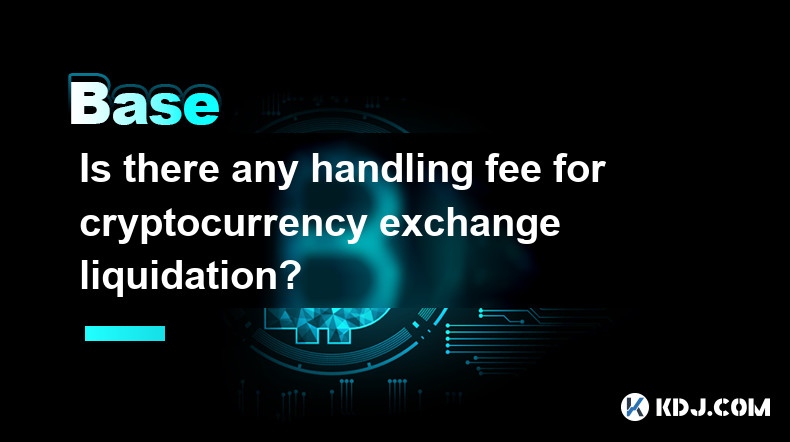
Is there any handling fee for cryptocurrency exchange liquidation?
Apr 10,2025 at 04:29pm
When trading contracts on cryptocurrency exchanges, liquidation is a word that scares investors. A liquidation means that the investor has lost all its principal. So, will the exchange still charge a handling fee when the liquidation is liquidated? This is a concern for many investors. This article will give a detailed answer to this. Important statemen...
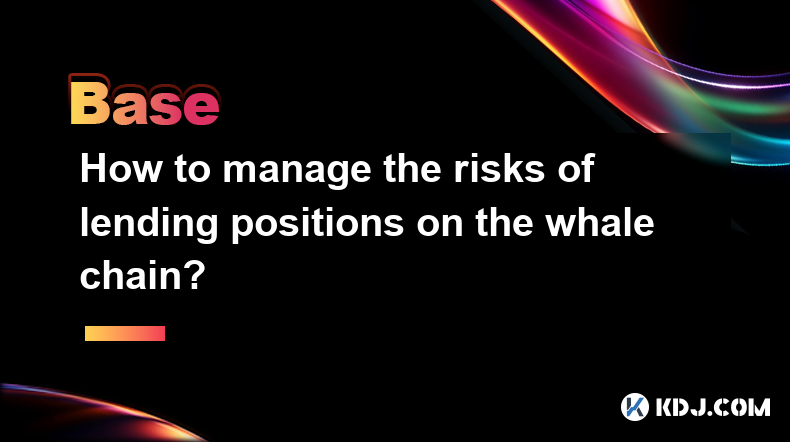
How to manage the risks of lending positions on the whale chain?
Apr 09,2025 at 10:50pm
To manage the risks of lending positions on the whale chain, we need to start from the following aspects: 1. Reasonable control of positions and leverage:Determine the appropriate lending scale and leverage multiple based on your own risk tolerance to avoid excessive leverage. For example, if whales do not have a particularly strong grasp of the market ...
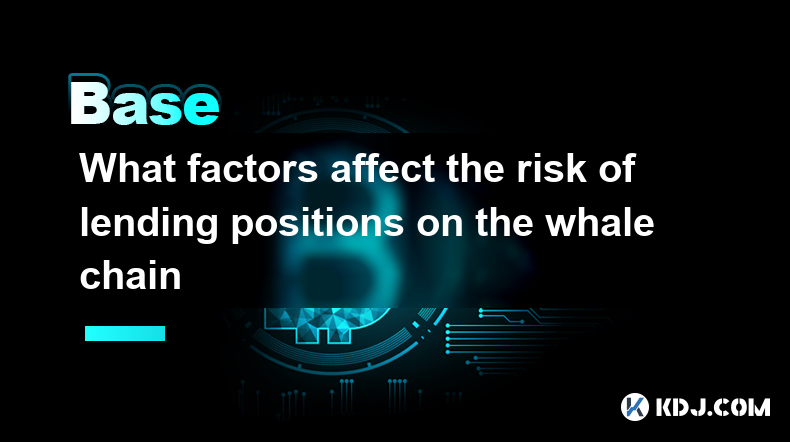
What factors affect the risk of lending positions on the whale chain
Apr 10,2025 at 12:35am
Here are some factors that will affect the risk of lending positions on the whale chain: 1. Market price fluctuations:The decline in collateral prices will cause the collateral value to shrink and may trigger liquidation. For example, a whale borrowed 75.69 million DAI with 60,810 ETH. When the price of ETH falls, its position health will drop sharply a...
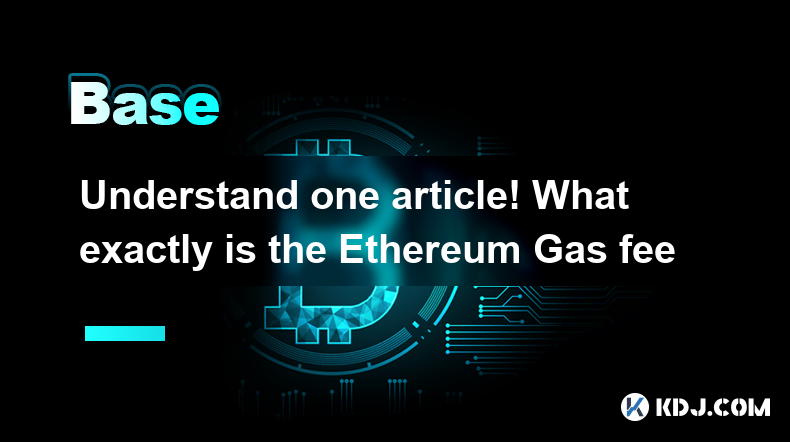
Understand one article! What exactly is the Ethereum Gas fee
Apr 10,2025 at 03:21am
The Ethereum Gas fee refers to the fees paid when trading or executing smart contracts on the Ethereum blockchain, which is used to compensate miners for the computing resources consumed by verifying and packaging exchanges. Here is a detailed introduction to it: Gas concept Gas can be regarded as the “fuel” in the Ethereum network. Ethereum is regarded...
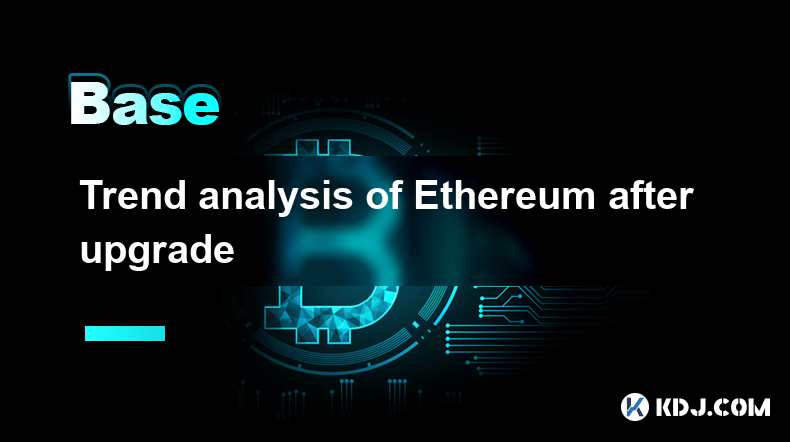
Trend analysis of Ethereum after upgrade
Apr 10,2025 at 04:01am
As a pioneer in blockchain technology, Ethereum has a profound impact on the entire digital asset field every upgrade. Accurately predicting upgraded market trends is crucial for investors and developers. This article will explore in-depth various trends that may appear after the upgrade of Ethereum, helping you grasp the pulse of the market and underst...
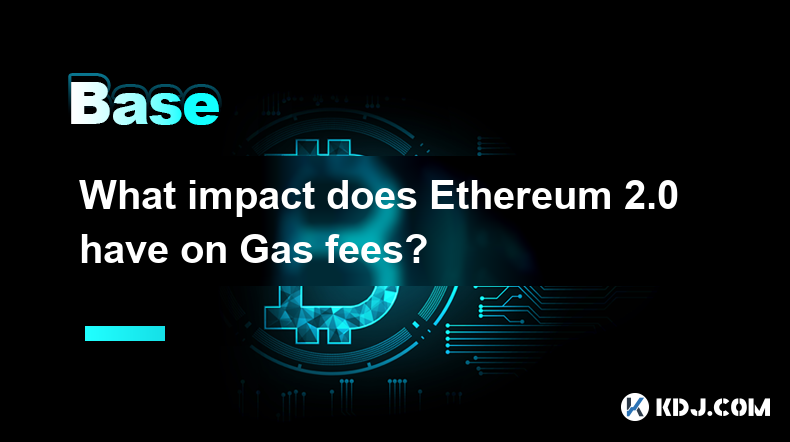
What impact does Ethereum 2.0 have on Gas fees
Apr 09,2025 at 02:43pm
Ethereum 2.0 has had a positive impact on Gas fees in many aspects, mainly reflected in the following aspects: Transformation of consensus mechanism : Ethereum 2.0 shifts from Proof of Work (PoW) to Proof of Stake (PoS). In PoW mode, miners consume a lot of resources in order to obtain block yield rights, so they offset the cost through high handling fe...

Is there any handling fee for cryptocurrency exchange liquidation?
Apr 10,2025 at 04:29pm
When trading contracts on cryptocurrency exchanges, liquidation is a word that scares investors. A liquidation means that the investor has lost all its principal. So, will the exchange still charge a handling fee when the liquidation is liquidated? This is a concern for many investors. This article will give a detailed answer to this. Important statemen...

How to manage the risks of lending positions on the whale chain?
Apr 09,2025 at 10:50pm
To manage the risks of lending positions on the whale chain, we need to start from the following aspects: 1. Reasonable control of positions and leverage:Determine the appropriate lending scale and leverage multiple based on your own risk tolerance to avoid excessive leverage. For example, if whales do not have a particularly strong grasp of the market ...

What factors affect the risk of lending positions on the whale chain
Apr 10,2025 at 12:35am
Here are some factors that will affect the risk of lending positions on the whale chain: 1. Market price fluctuations:The decline in collateral prices will cause the collateral value to shrink and may trigger liquidation. For example, a whale borrowed 75.69 million DAI with 60,810 ETH. When the price of ETH falls, its position health will drop sharply a...

Understand one article! What exactly is the Ethereum Gas fee
Apr 10,2025 at 03:21am
The Ethereum Gas fee refers to the fees paid when trading or executing smart contracts on the Ethereum blockchain, which is used to compensate miners for the computing resources consumed by verifying and packaging exchanges. Here is a detailed introduction to it: Gas concept Gas can be regarded as the “fuel” in the Ethereum network. Ethereum is regarded...

Trend analysis of Ethereum after upgrade
Apr 10,2025 at 04:01am
As a pioneer in blockchain technology, Ethereum has a profound impact on the entire digital asset field every upgrade. Accurately predicting upgraded market trends is crucial for investors and developers. This article will explore in-depth various trends that may appear after the upgrade of Ethereum, helping you grasp the pulse of the market and underst...

What impact does Ethereum 2.0 have on Gas fees
Apr 09,2025 at 02:43pm
Ethereum 2.0 has had a positive impact on Gas fees in many aspects, mainly reflected in the following aspects: Transformation of consensus mechanism : Ethereum 2.0 shifts from Proof of Work (PoW) to Proof of Stake (PoS). In PoW mode, miners consume a lot of resources in order to obtain block yield rights, so they offset the cost through high handling fe...
See all articles





















































































